Uniting (formerly Methodist) Church
Kooyong Road, Armadale
B 1912-14 Frederick Taylor. 2m 22spst, 6c, tubpn.
Reb 1974 Geo Fincham & Sons.
Great Mixture III added 1990 Geo Fincham & Sons in place of Taylor Viol Sourdine.
2m, 31spst, 9c, elpn. Gt: 8.8.8.8.4.4.2.II.V.III.8.8. Sw: 8.8.8.8.4.4.2-2/3.2.1.8.8.
Ped: 16.16.8.8.4.16.8.4.
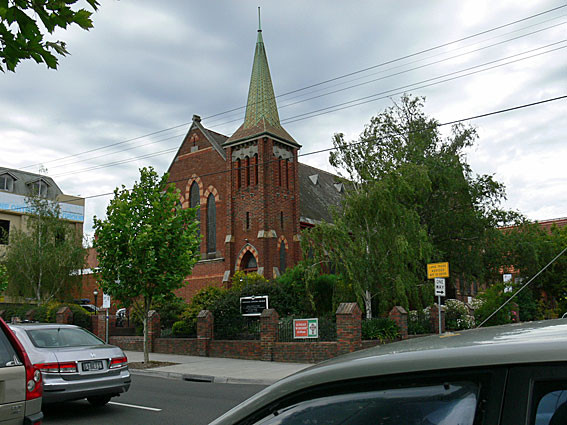
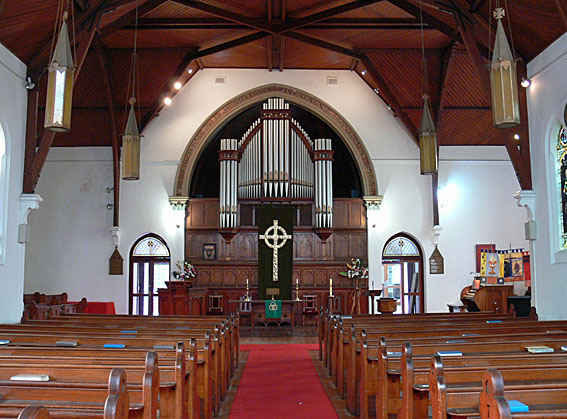
The church building was initially opened in August 1881 and extensions were completed in 1886. It was designed in an Early-English Gothic idiom by the noted firm of Terry & Oakden and built in polychromatic brickwork. It consists of a nave and transepts with an organ chamber to the east. The tower and spire were completed in the interwar years by Louis R. Williams.
The organ was built between 1912 and 1914 by Frederick Taylor, of Hawthorn. This firm was recommended over Geo. Fincham & Son and J.E. Dodd by the Melbourne City Organist Dr W.G. Price, who considered its work to be more imaginative tonally than its contemporaries. The cost of the completed organ was £660. Three additional stops were added to the initial scheme and given anonymously. Metal pipework was supplied by Alfred Palmer & Sons, England. The casework was constructed in blackwood and the facade pipes were finished in aluminium. There was a considerable delay in completing the organ; the opening had been scheduled for 3 August 1913 but it was not finally opened until 24 August 1914 after having been approved by Dr Price on 27 July 1914.
Original Organ Specification
| GREAT | SWELL | PEDAL | COUPLERS |
|---|---|---|---|
|
8' Open Diapason 8' Tibia Minor 8' Portunal 8' Dolce 8' Viol Sourdine 4' Octave 4' Harmonic Flute 2' Harmonic Gemshorn 8' Tuba Minor 8' Clarinet |
16' Contra Viola 8' Geigen Principal 8' Hohlflute 8' Viol d'Orchestre 8' Vox Celeste 4' Geigen Principal 4' Rohrflute 8' Closed Horn 8' Orchestral Oboe |
16' Pedal Open 16' Pedal Bourdon 8' Pedal Principal |
Swell Sub Octave Swell Octave Swell to Great Swell to Great Octave Great to Pedal Swell to Pedal |
Modifications and Rebuilds
In February 1937, several stops were replaced although it is unclear what these were. They may have been several of the narrow-scale string ranks as the scales of the Swell Viol d'Orchestre and Vox Celeste now differ considerably.
The organ was rebuilt by George Fincham & Sons Pty Ltd in 1974. The original tubular-pneumatic action was converted to electro-pneumatic and the Taylor console was refitted with new stopkeys, keyboards and pistons. The original Taylor stopkey rail was preserved inside the organ. The following tonal changes appear to have taken place:
- The Great Tuba Minor 8 was removed to a separate windchest and extended down to 16ft and made playable on the Great and Pedal Organs. A Sesquialtera II ranks 12.17 was inserted in its place and also derived to make up a Cornet V ranks 1.8.12.15.17, borrowing the 1.8.15 from other stops.
- The Swell Contra Viola 16 was removed and replaced by a conical Nazard 2-2/3. On a separate windchest, suspended from the top of the swell box, a rank of 73 metal pipes was placed providing Piccolo 2 and Sifflute 1.
- The Taylor Clarinet 8 was revoiced as a free-toned Cromorne 8.
- The two Taylor Pedal ranks were extended upwards to 8 and 4 pitches.
- Later, in 1990, the Taylor Viol Sourdine 8 was removed and replaced by a very sharp-toned Mixture III ranks 15.19.22. This was carried out in memory of the former organist Stanley Elliott.
Current Organ Specification
| GREAT | SWELL | PEDAL |
|---|---|---|
|
8' Open Diapason 8' Tibia Minor 8' Portunal 8' Dolce 4' Octave 4' Harmonic Flute 2' Harmonic Gemshorn II Sesquialtera 12-17 III Mixture 15-19-22 V Cornet 1-8-12-15-17 8' Tuba Minor 8' Cromorne Swell to Great Sub Swell to Great Swell to Great Super |
8' Geigen Principal 8' Hohlflute 8' Viol d'Orch 8' Voix Celeste 4' Geigen Principal 4' Rohrflute 2 2/3' Nazard 2' Piccolo 1' Sifflute 8' Closed Horn 8' Orchestral Oboe Swell Sub Octave Swell Unison Off Swell Super Octave Tremulant |
16' Open Diapason Wood 16' Bourdon 8' Principal 8' Bass Flute 4' Principal 16' Posaune 8' Tromba 4' Clarion Great to Pedal Great to Pedal Super Swell to Pedal |
Additional Information
- Compass: 61/30
- Detached stopkey console
- Electro-pneumatic action
- 4 thumb pistons to Great
- 4 thumb pistons to Swell
- 4 thumb pistons to Pedal
- Reversible thumb pistons for: Swell to Great, Great to Pedal, Swell to Pedal, Full organ
- Cancel thumb pistons for Great, Swell and General
- Balanced electric swell pedal
This is the only major example of a Taylor organ where the majority of the original pipework and tonal scheme survive. The only comparable organ is the 1912 instrument formerly in the Uniting Church, Ashfield, NSW which is now in storage. Its contemporary organs at St Clement's Church, Mosman and the Presbyterian Church, North Carlton have been rebuilt and later placed in storage. Sadly, it is the only place where Taylor's symphonic vision may currently be observed, albeit in an altered state.
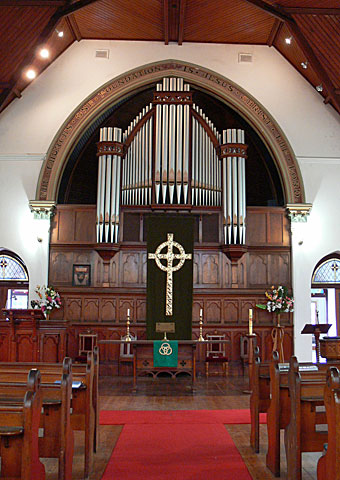
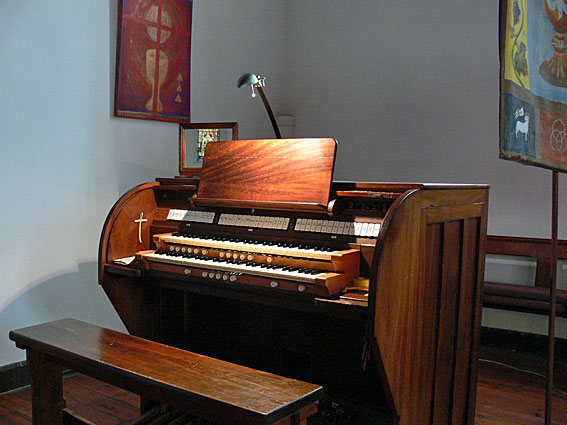
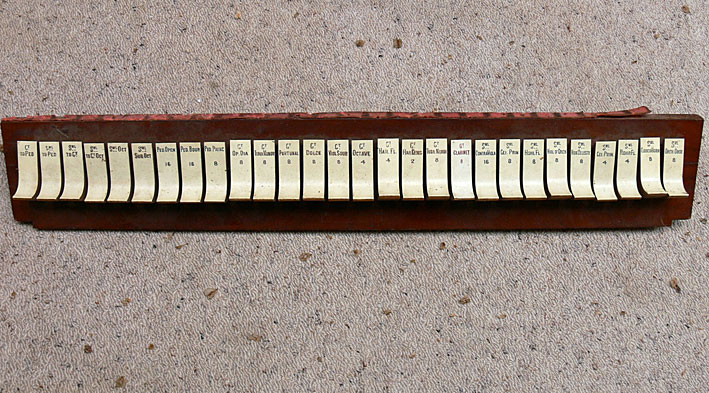
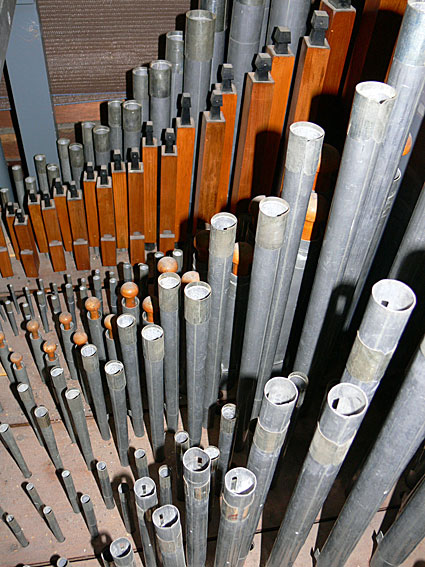
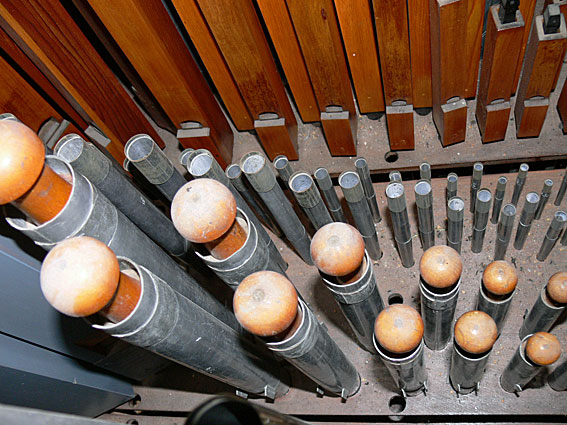
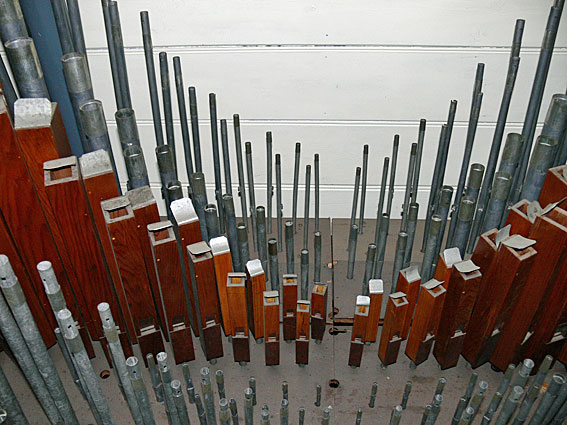
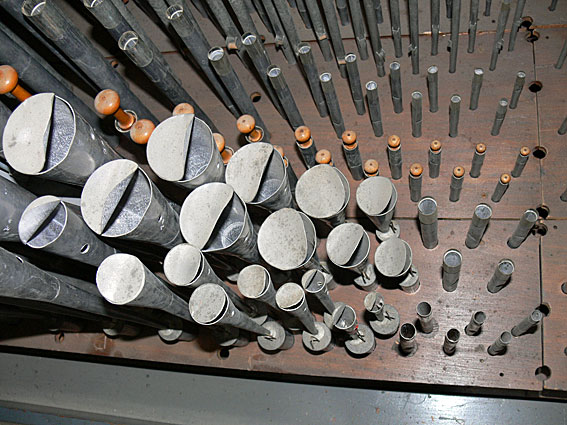
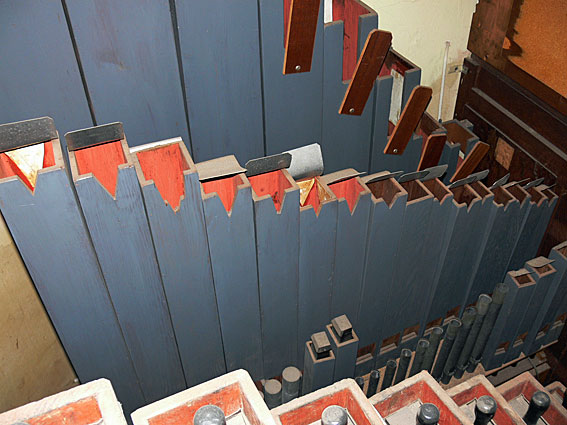
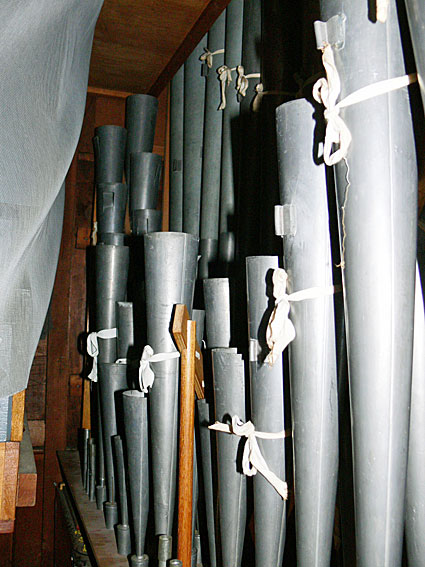
Photos: John Maidment (Nov 2010)
John Maidment
13 November 2010
Information kindly supplied by Christine Oldham from the church minute books and correspondence housed at the Uniting Church Archives, Elsternwick.